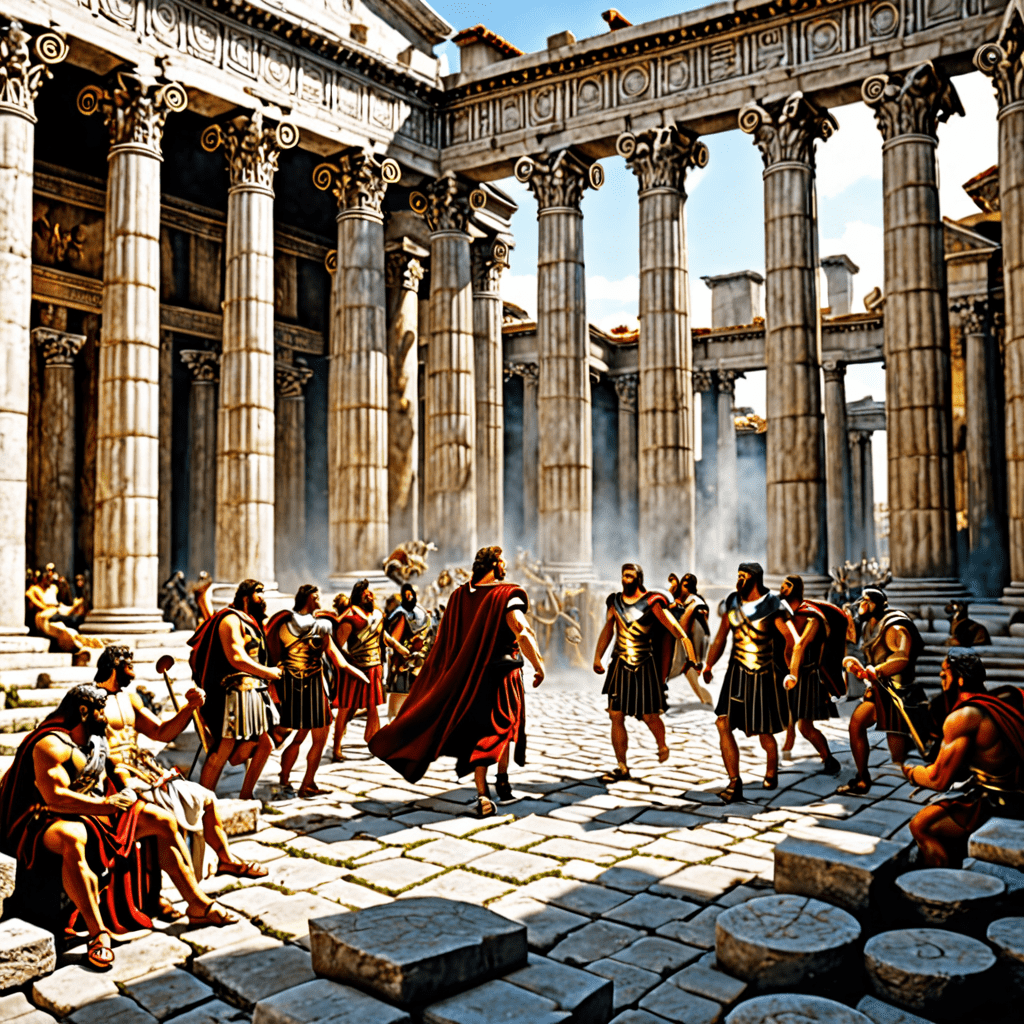The Dynamic Balance: Order and Chaos in Roman Mythology
Discover the intertwined forces of order and chaos shaping the vibrant tapestry of Roman mythology.
The Primordial World: Chaos and Creation
In Roman mythology, the universe was initially in chaos – a formless state without order or light. From this chaos, certain deities emerged, initiating the creation of the world as we know it. Among them, we find primordial beings like Gaia (Earth) and Uranus (Sky), setting the stage for the cosmic order to take shape.
The Cosmic Balance: Gods of Order and Chaos
The Roman pantheon accommodates an array of deities embodying either order or chaos. Jupiter (Zeus) represents order and rulership, overseeing the celestial domain and upholding justice. In contrast, deities like Discordia embody chaos, promoting strife and upheaval. These contrasting forces play essential roles in maintaining the balance of the cosmos.
The Clash of Titans: Mythological Stories of Order and Chaos
Mythological tales in Roman lore often depict the eternal struggle between order and chaos. Stories like the Titanomachy illustrate the conflict between titans representing chaos, trying to overthrow the reigning Olympian gods upholding order. This narrative reflects the perpetual tension between opposing forces in the mythological realm.
The Influence on Roman Society: Order and Chaos in Everyday Life
Roman mythology’s portrayal of order and chaos extends beyond the divine realm, influencing society’s values and beliefs. Concepts of law, hierarchy, and discipline stem from the gods of order, shaping governance and social structure. Conversely, chaos deities remind Romans of the unpredictability of life and the need to adapt to unforeseen challenges.
Embracing the Duality: Finding Balance in the Mythological Paradigm
Exploring Roman mythology’s interplay of order and chaos allows us to contemplate the dualistic nature of existence. Just as the gods navigate the delicate equilibrium between these opposing forces, we, too, can seek harmony amidst life’s complexities. By acknowledging both order and chaos within and around us, we embark on a journey of self-discovery and inner balance.
FAQ about Exploring the Concept of Order and Chaos in Roman Mythology
What is the concept of Order and Chaos in Roman Mythology?
In Roman mythology, Order and Chaos represent the fundamental forces governing the universe. Order embodies structure, harmony, and stability, while Chaos symbolizes disorder, unpredictability, and turmoil. The interplay between these forces shapes the world and its inhabitants.
How do Roman myths depict the balance between Order and Chaos?
Roman myths often portray deities like Jupiter (representing Order) and Discordia (symbolizing Chaos) in a constant struggle for dominance. Stories of creation, battles, and divine interventions illustrate how Order and Chaos interact to maintain equilibrium in the cosmos.
What roles do gods and goddesses play in the concept of Order and Chaos?
Deities in Roman mythology personify different aspects of Order and Chaos. For example, Janus is a god of beginnings, transitions, and doorways, symbolizing the duality of order and chaos. Discordia, on the other hand, incites strife and discord, disrupting harmony.
How do myths about Order and Chaos influence Roman culture and beliefs?
The Roman understanding of Order and Chaos influences moral values, social hierarchies, and the perception of natural phenomena. Myths serve as moral lessons, explaining the




